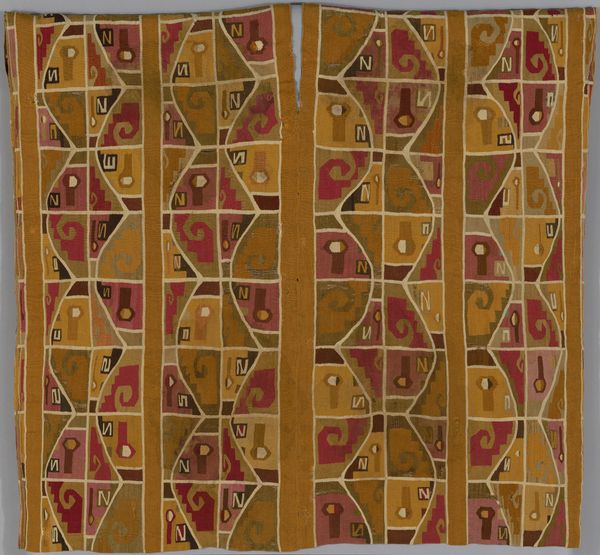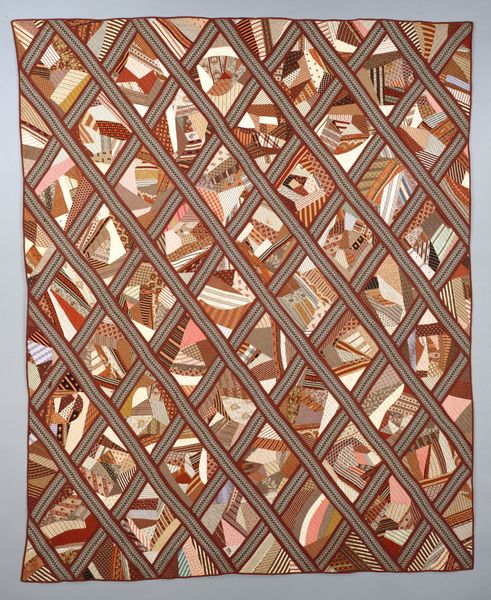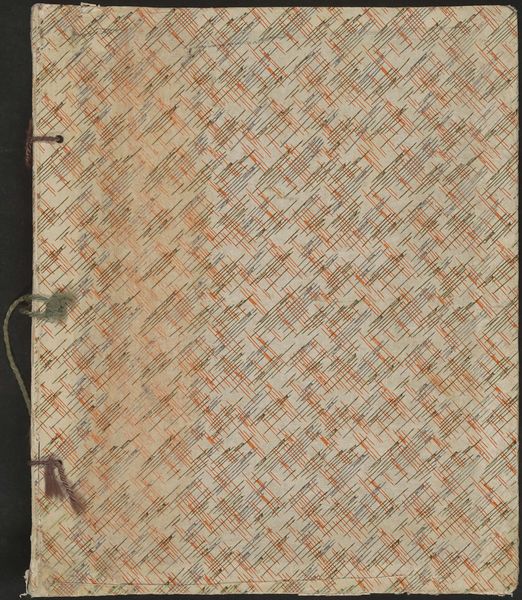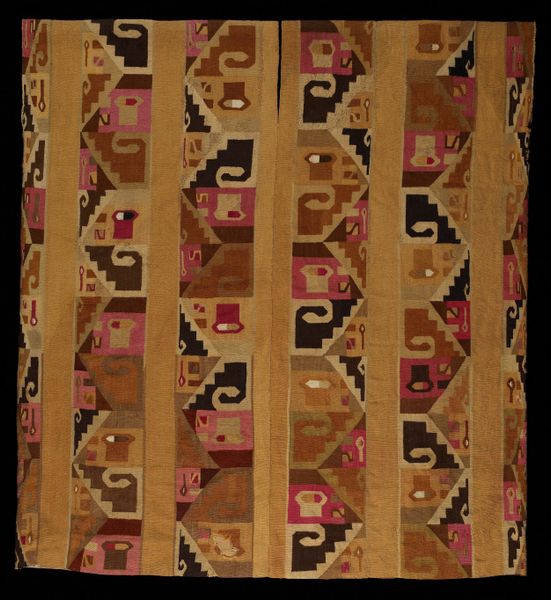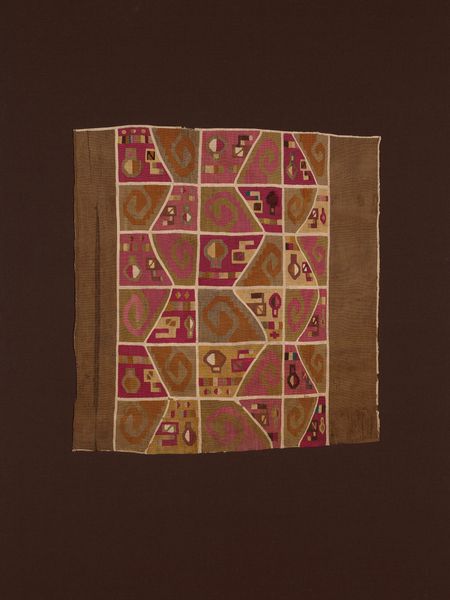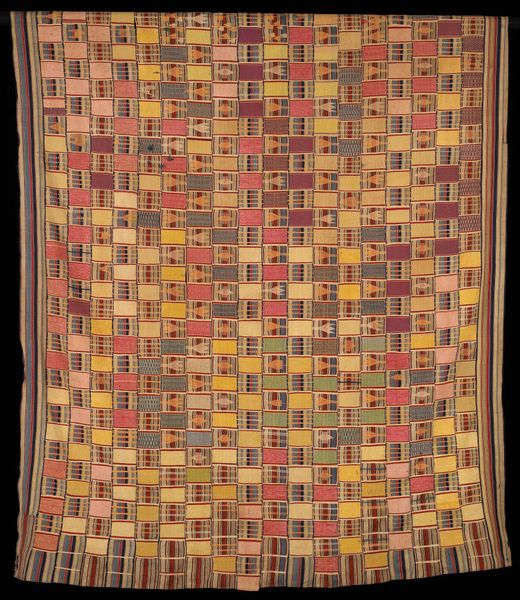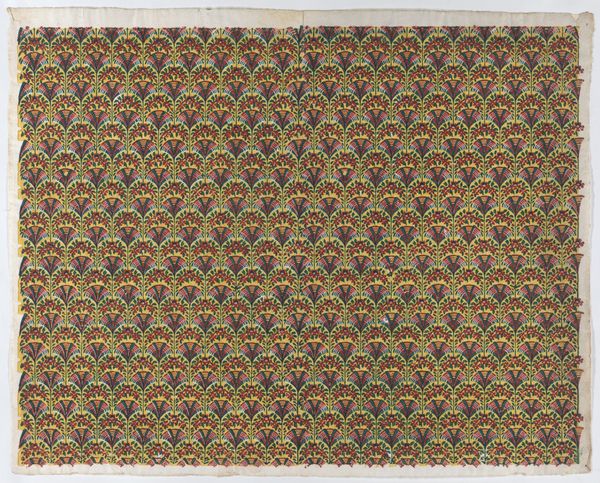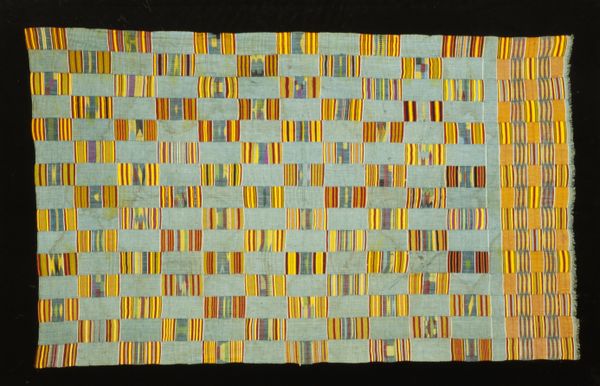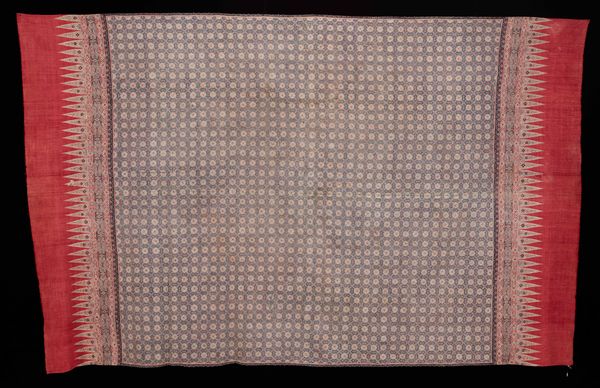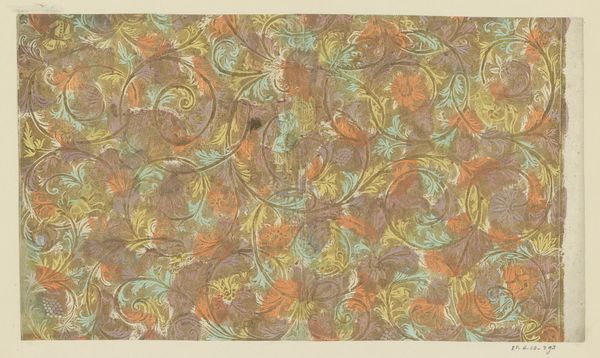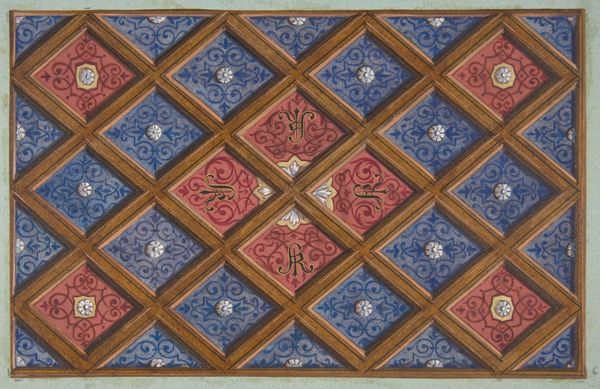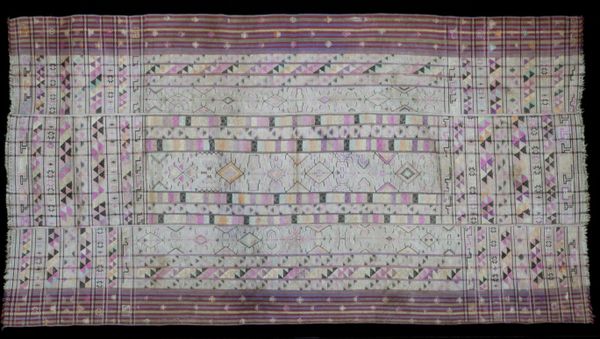
fibre-art, weaving, textile
#
fibre-art
#
weaving
#
textile
#
geometric pattern
#
geometric
#
repetition of pattern
#
vertical pattern
#
regular pattern
#
indigenous-americas
Dimensions: 109.9 × 119.7 cm (43 1/4 × 47 1/8 in.)
Copyright: Public Domain
Editor: This striking textile, titled "Tunic," is a Wari piece, likely crafted between 600 and 800 AD. It's made of wool, showcasing a geometric pattern in reddish-brown and ochre hues. I’m immediately drawn to the repetition of those distinct motifs. How do you interpret the symbolic language in this weaving? Curator: The insistent repetition itself is significant, creating a visual rhythm, perhaps echoing ritualistic chants or dances. Notice how the geometric forms resolve into recognizable, almost figurative shapes: are they human forms, or abstracted deities? Or even social structures? The ambiguity itself invites contemplation. This isn't just decoration; it's loaded with meaning for those who know how to "read" it. What do you make of the relationship between those positive and negative spaces? Editor: It’s interesting that the spaces in between create new implied forms; the negative space becomes almost as important as the actual woven pattern. I also wonder about the colour choices and how they were intentional? Curator: Colour held immense power in Andean cultures. Red, especially, was associated with life force, power, and rulership. Do you notice the hierarchical arrangement of the symbols; for example, a symbol higher up will appear less often compared to a symbol appearing at the very bottom? Editor: Now that you mention it, there definitely is a hierarchical arrangement, it could signify social order, with the most prominent symbols reserved for figures of authority or spiritual significance. The tunic isn’t just an item of clothing, it's a potent symbol of status and belief. Curator: Precisely. Seeing these symbols invites a continuous renegotiation of understanding how historical symbols are carried through time and resonate differently, dependent on shifting worldviews. Editor: That’s given me a new appreciation for the textile; its beautiful design speaks of a structured and sophisticated belief system. Thanks for highlighting those details.
Comments
No comments
Be the first to comment and join the conversation on the ultimate creative platform.
